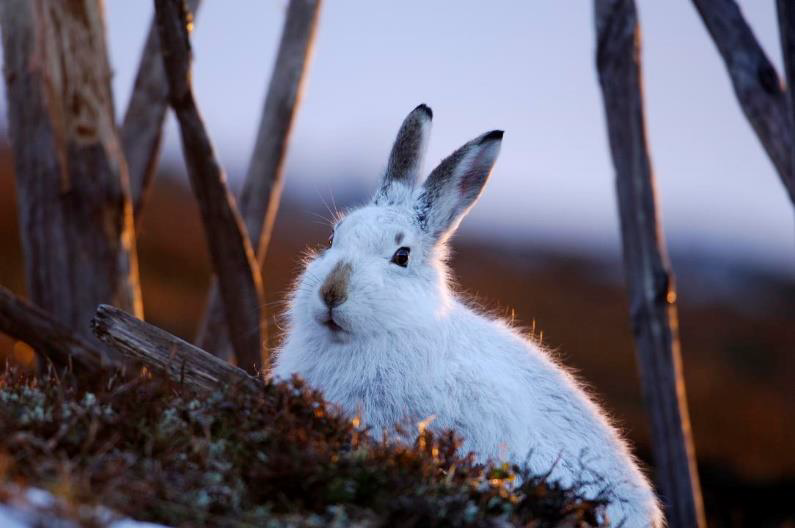
Dave Windle
Volunteers are wanted for the first on-the-ground national survey to shed light on distribution and numbers of Scottish mountain hares.
The survey, which is launched now and will carry on throughout 2021, is calling on hillwalkers, naturalists and other outdoor enthusiasts to record sightings of these charismatic animals as they are out and about. No previous experience of wildlife surveys is necessary to take part.
 |
| © Lorne Gill, NatureScot |
There is concern about the state of the mountain hare population and the possible effects of control measures. The available sources of information present a mixed picture of their conservation status, making it difficult to draw firm conclusions on population size and trends. The picture is further complicated by their naturally cycling populations, which can fluctuate by ten-fold or more over periods of about nine to ten years.
This project is a partnership of NatureScot (previously SNH), the British Trust for Ornithology (BTO), the Mammal Society, the Game & Wildlife Conservation Trust and the James Hutton Institute (JHI). It builds on previous work to develop suitable counting methods and seeks to complement these other counts to allow improved monitoring of mountain hares across their range in Scotland.
To participate, volunteers will need a smartphone with the free Mammal Mapper app. This can be used to record mammals during walks anywhere in Scotland. It contains an in-built ID guide to help participants identify mammals that they see, plus a section on upland birds which can now be recorded too. The BTO website also shows the highest priority areas for mountain hare monitoring (www.bto.org/mountain-hares). Volunteers are asked to take part as and when regional Covid travel restrictions allow.
Fiona Mathews from the Mammal Society said:
“Mountain hares are classed as Near Threatened in Britain by our recent
Red List, highlighting the need for urgent action. Almost all of Britain’s
mountain hares are found in Scotland, yet in most regions we have very
little information on how they are doing. That is why we are calling on
the public to help in our new project. You don’t have to be a specialist:
all you need is to be out in the hills with a smartphone.”
Rob Raynor, a mammal specialist at NatureScot, said:
“Many people enjoy seeing mountain hares in the Scottish hills. Our
priority is to make sure they remain a common sight. To do that, we need a
better understanding of the existing population – something which this
novel national survey will make possible by filling in the gaps in our
knowledge. It will give us a better picture of mountain hare numbers, both
regionally and nationally, and support decisions about how to maintain and
conserve our native hare population.
“We’d like to encourage hillwalkers and anyone with an interest to contribute their sightings to this valuable project. We have an online training video and guidance within the app, so participants who aren’t certain if they’ll be able to tell the difference between mountain hares, brown hares or rabbits can feel confident about their identification once they’re out in the hills."
Ben Darvill from the BTO added:
“Scotland’s outdoor enthusiasts can transform our understanding of
mountain hares via this simple survey. It’s easy to log hare sightings
while you’re out in the hills, and keen participants can also record the
upland birds that they see, too. We hope that the project will add an
enjoyable extra dimension to outdoor adventures.”
The survey information will be collated by the British Trust for
Ornithology and the Mammal Society, and summary data made publicly
available. The data will contribute to a wider mountain hare monitoring
scheme that uses other methods, such as night-time counts with spot lamps,
and will be used to better understand how mountain hare numbers are
changing.
Please let the webmaster know if there are problems with viewing these pages or with the links they contain.